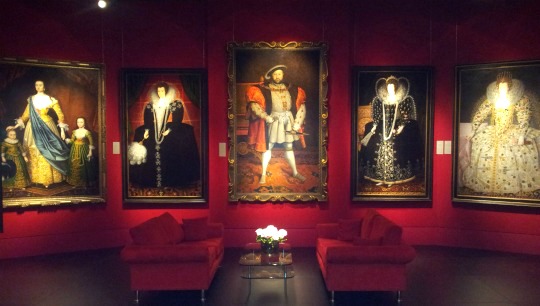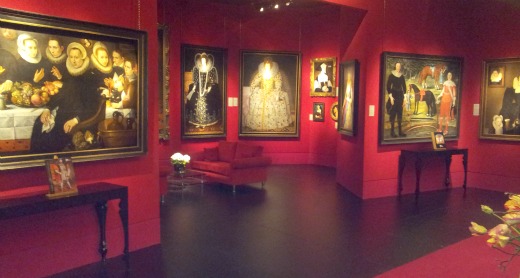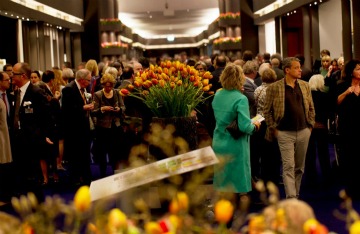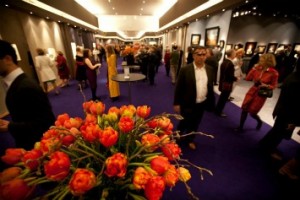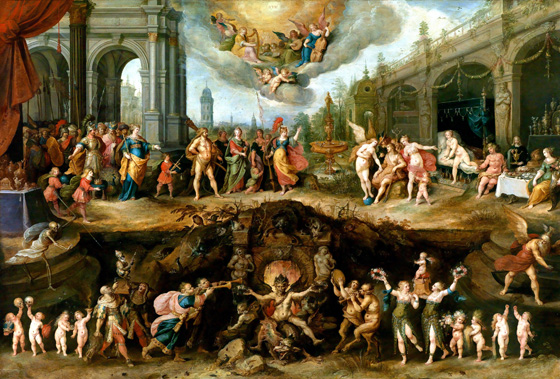Christie’s announced a very unusual deaccession the other day: The Akron Art Museum plans to sell one of Cindy Sherman’s most famous images. Dating to 1981, the photo is known officially as Untitled, #96; unofficially as Orange Sweater, and comes from her Centerfolds series. As Christie’s noted in its release, “Another example of this image was sold at Christie’s in May 2011 for $3,890,500, which represents not only a world auction record for Sherman, but also a world record price for any photograph at the time.* The work from the Akron Art Museum is a vintage print in excellent condition and will have a pre-sale estimate of $2,800,000 – $3,800,000.”
 Either museum director Mitchell Kahan is brave or foolhardy, I haven’t yet made up my mind.
Either museum director Mitchell Kahan is brave or foolhardy, I haven’t yet made up my mind.
In its release, Christie’s quotes Kahan saying, “The Akron Art Museum is extremely happy to partner with Christie’s on this sale. The result will be a new acquisitions endowment that generates significant growth for our collection. I am especially looking forward to continuing a commitment to Cindy Sherman by acquiring works made after the famous Centerfolds images.â€
I have mixed feelings about this move.
On the “brave” side: Kahan’s goal is admirable — an acquisitions endowment. As I noted recently in an article for The New York Times, too few art museums have sizeable funds to buy art. Moreover, selling a contemporary work is rare. Most museums tend to clean out works from the past when they sell, even though many directors have told me privately that they should be weeding out what they’ve bought since the 1970s. That’s partly because of undiscriminating buying: some museums admit privately to purchasing “one of each” — that is, one example of many artists that somehow got buzz and critical acclaim for a moment, but have since dropped into to the 90 percent of all artists who will be ignored by art history. Little curatorial eye was involved. Now they’re stuck with things in storage that will likely never be shown. But they fear selling for two reasons: they don’t want to offend a living artist and his/her dealer and they fear making a mistake, even if only a public-relations one.Â
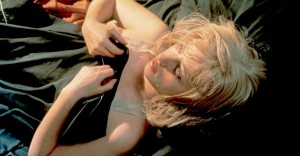 On the “foolhardy” side: Whatever you may think of Cindy Sherman, the current consensus is that she is an important artist. The Akron museum owns another Sherman work, also from 1981, officially Untitled #93 and nicknamed “The Black Sheets.” But is the one they’re selling better than the one they’re keeping? It is better known. And aren’t collections supposed to have depth? Even if Kahan finds a later work by Sherman, from a different series, might that be less enlightening than showing two from the same series? Meantime, what example is Kahan setting for other museums? Is selling because of the jump in Sherman’s prices so tempting that museums will become active traders? And will other museums miss his subtler message of using the proceeds to acquire in the same area/time period?  Â
On the “foolhardy” side: Whatever you may think of Cindy Sherman, the current consensus is that she is an important artist. The Akron museum owns another Sherman work, also from 1981, officially Untitled #93 and nicknamed “The Black Sheets.” But is the one they’re selling better than the one they’re keeping? It is better known. And aren’t collections supposed to have depth? Even if Kahan finds a later work by Sherman, from a different series, might that be less enlightening than showing two from the same series? Meantime, what example is Kahan setting for other museums? Is selling because of the jump in Sherman’s prices so tempting that museums will become active traders? And will other museums miss his subtler message of using the proceeds to acquire in the same area/time period?  Â
Kahan told the Cleveland Plain-Dealer that adding the proceeds from this picture to the Akron museum’s $2 million acquisitions endowment could boost the amount of money it has to buy art to more than $260,000 a year, and added: “What’s the greater community benefit, keeping the ‘Orange Sweater’ and showing it once every five years, or having a few more million dollars generating money in perpetuity to buy more works of art?â€



